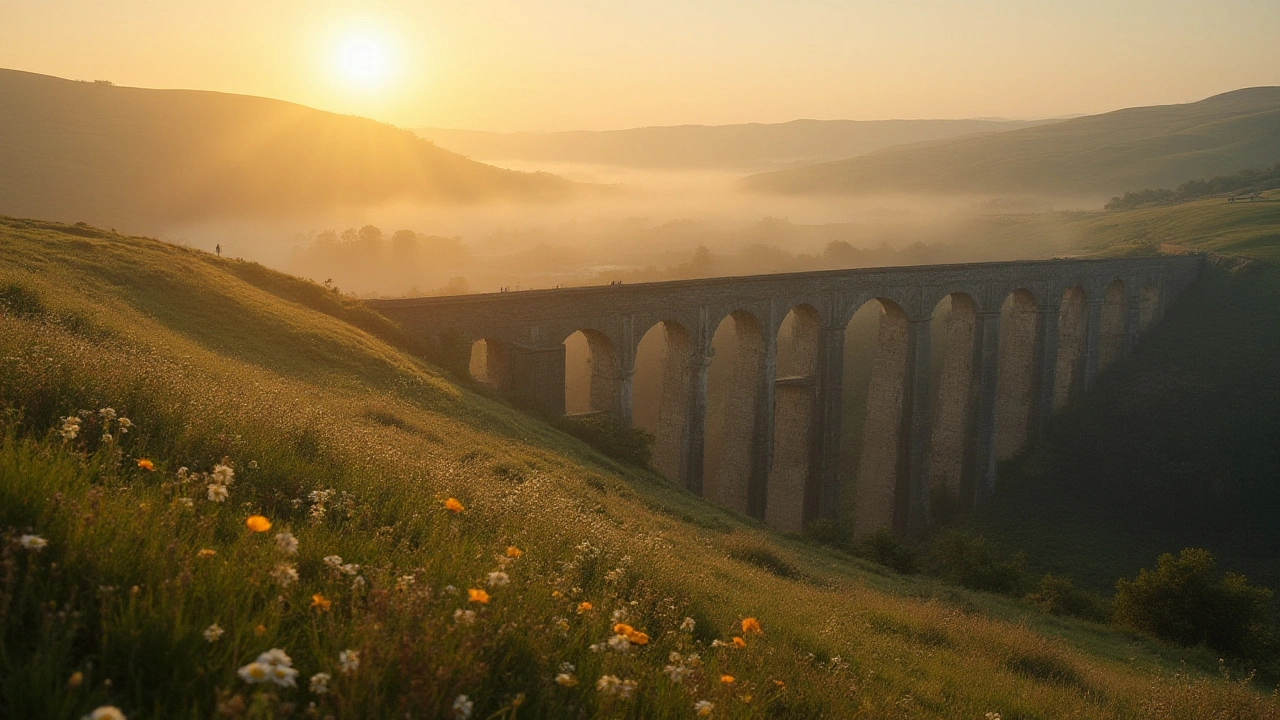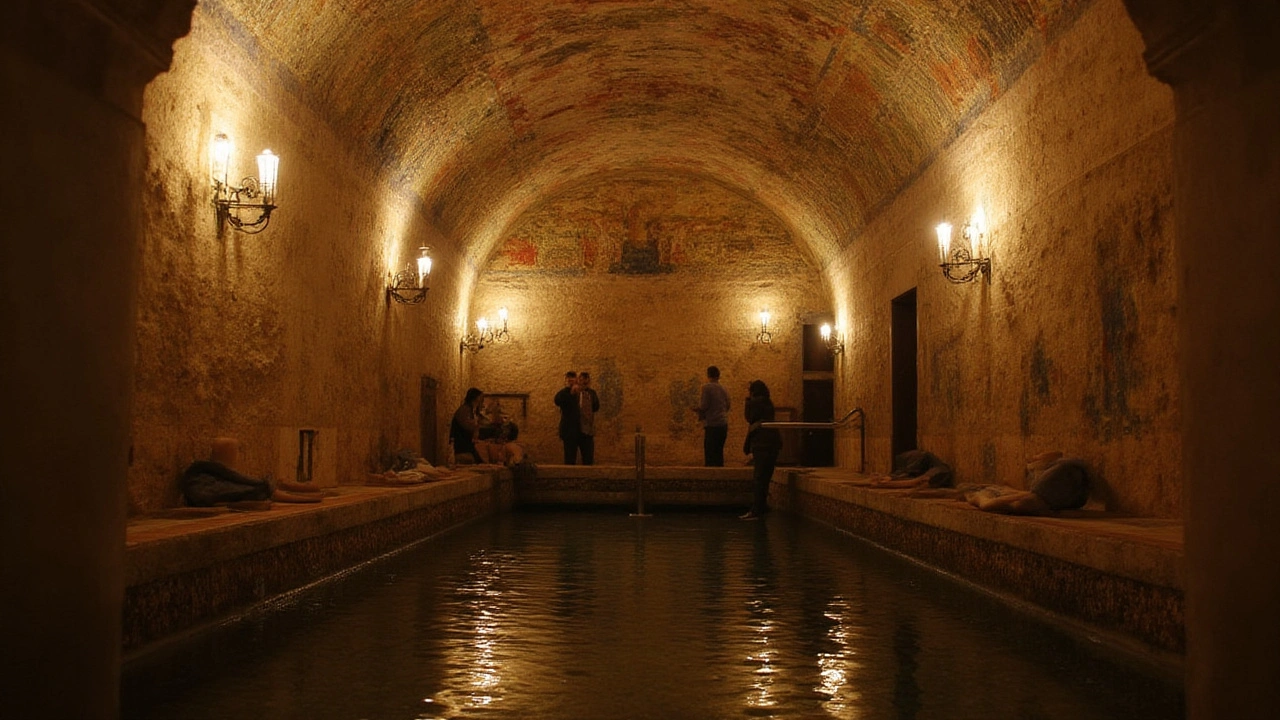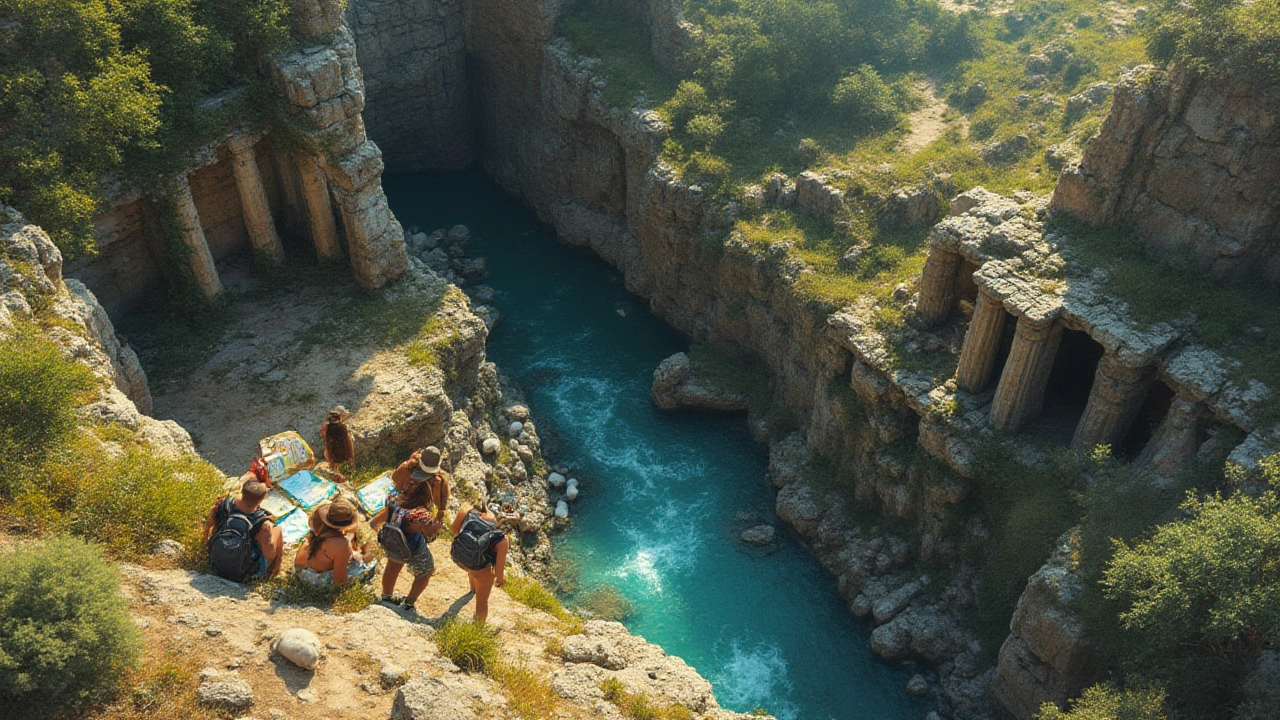Ancient Roman Hidden Gems: Unveiling Forgotten Marvels of Roman Architecture
 Jul, 21 2025
Jul, 21 2025
Romans built more than just big arenas and fancy temples. You probably think of the Colosseum whenever Roman architecture comes up. But step away from those tourist magnets and you’ll find quiet, jaw-dropping masterpieces tucked into old cities, countryside ruins, and even under busy modern streets. Some are so odd or innovative that seasoned architects still scratch their heads. Ever heard of a Roman lighthouse still standing, or the world’s oldest shopping mall? Let’s break the myth that Roman architecture is just arches and columns. It’s time for a deep dive into the wild, overlooked corners of this ancient world’s creativity.
The Bath Complexes: More Than Just Marble and Water
The Romans took bathing seriously—almost competitively. They didn’t just sink bathtubs into the floor; they built sprawling complexes that acted as city centers, gyms, libraries, gardens, and art galleries all in one. The Baths of Caracalla in Rome regularly grab the spotlight, but the Baths of Diocletian deserve a second look. Completed in 306 AD, they could hold up to 3,000 people at a time. Check out their massive vaulted halls, which look more like the inside of a cathedral than a spa. In fact, parts of this bathhouse were later turned into the Basilica of Santa Maria degli Angeli.
But get this—ancient Rome’s public baths had underfloor heating called hypocausts. Yes, two thousand years ago, you’d walk on warm floors and enjoy steam rooms. The system relied on burning wood beneath suspended floors made from tile stacks. Engineers had to balance heat so those in togas wouldn’t end up roasted. Some baths even used mosaics featuring mythological sea monsters and dolphins, not just as decoration but to signal which pools were hot or cold. Look for remnants of these mosaics in the Baths of Neptune at Ostia Antica, Rome’s old port. The site is less crowded than the city’s main ruins but full of well-preserved artwork.
There’s another gem: the Baths of Zeuxippus in ancient Constantinople (modern Istanbul). Though not much remains, records describe elaborate marble sculptures hauled in from across the empire, including works by famous Greek sculptors. The baths were so beloved that, according to a Byzantine chronicler, people wrote poems about spending afternoons lounging there. Hygiene and socializing in imperial style? That’s Roman architecture with extra flair.
Lighthouses, Dams, and Roman Engineering Wonders
If you’re out looking for Roman ruins beyond Italy, keep your eyes peeled for stuff that doesn’t look “Roman” at first glance. The Romans built at least 30 stone lighthouses, or pharoi, along the coasts. The Tower of Hercules in Spain, for example, is the world’s oldest working lighthouse—still guiding ships after almost 2,000 years. Its core masonry is all Roman, which is wild considering how heavy Atlantic storms get.
Now, let’s talk about their dams and water engineering. In the parched hills of Spain lies the Proserpina Dam, finished around 130 AD. Made from concrete with cut stone facing, it’s tough enough to still hold water today. Romans even invented watertight concrete using volcanic ash from Pozzuoli, which helped them build piers underwater. Head over to the Pont du Gard in southern France and stand beneath its three-tiered arches. You’ll feel tiny—each stone was set without any modern crane or power tool, yet the aqueduct still carries water across valleys, just as it did in 50 AD.
Romans also strayed into quirky territory. In Britain, the “Roman signal stations” along the Yorkshire coast acted like ancient coast guards. Archaeologists recently identified one at Ravenscar, which used both beacon fires and hidden rooms to relay warnings about pirates or invading Saxons. A trip there shows you stonework layered with sea breezes and history.

Hidden Temples and Shrines: The Mystery Spaces
Most visitors snap pictures of the Pantheon or the Temple of Saturn, but the really interesting stuff hides in plain sight. The Mithraeum in Rome—tucked below a modern office building on Via della Marmorata—takes you straight into a secretive cult from 2nd-century AD. Worshippers entered this underground temple to honor Mithras, slayer of the cosmic bull. You can still see red-painted pillars and an altar revealing traces of ancient feasts and blood sacrifices. Reservations are a must, since space is tight and the site is cool, dark, and shrouded in mystery.
Then you’ve got the Karenben temple in Baalbek, Lebanon. It’s lesser known than the nearby, colossal Temple of Jupiter, but its intricate carvings—almost like lace cut from stone—make it a masterpiece of Roman technique and local flair. Stone blocks here are among the largest ever moved by human hands. Engineers still argue about exactly how Romans transported these “megaliths”—one block weighs more than 1,000 tons. Some say wooden rollers, others point to clever use of levers, but so far, nobody’s rolled a definite answer out yet.
If you want something really off the map, track down the Temple of Bacchus in Baalbek. Yes, it’s dedicated to the wine god, and the preserved friezes around the top burst with grapevines, musicians, and dancing satyrs. Surprisingly, the structure survived earthquakes that flattened much of the surrounding area, giving us a direct view of its original grandeur. The temple’s clever drainage and earthquake-resistant substructure are now studied by modern engineers looking to solve urban problems in earthquake-prone areas.
Forgotten Everyday Marvels: Streets, Markets, and Homes
Roman daily life wasn’t all togas and banquets. If you wander through the backstreets of Pompeii or Ostia Antica, you’ll spot apartment complexes that look like proto-condos. The Insulae (plural of “insula,” which means “island”) could rise up to six stories, with street-facing shops at the base and cramped single rooms on the upper floors. No elevators, but clever use of shared water tanks and communal bathrooms. If you ever wondered who invented mixed-use buildings, the answer is: the Romans did, nearly 2,000 years ahead of modern architects.
Now, the world’s first covered shopping mall? The Trajan’s Market sprawls across several tiers below the Quirinal Hill in Rome. It opened for business around 110 AD, offering everything from olive oil and wine to clothing and spices. Picture a two-story semi-circular structure, with interior walkways and a main hall. Modern retail architects still call it a model for today’s shopping centers. You can walk through and peek into the original offices, storerooms, and little taverns where ancient Romans might have had a midday snack.
While we’re at it, let’s mention how even the “ordinary” Roman street reveals hidden genius. They built roads with layers—a core of sand, gravel, tile, then paving stones on top, angled to move rainwater into side drains. Some ancient streets, like those in Pompeii, show ruts from chariot wheels. But look closer: at crossing points, stepping stones let pedestrians avoid puddles and mud while allowing carts to pass through. Ingenious, and still surprisingly practical if you find yourself caught in an Italian downpour.

Surviving the Centuries: Tips for Exploring Roman Ruins
If you want to catch these Roman architectural wonders before they vanish—or crowd control keeps you out—here are some pointers. Skip the peak season in Italy; late spring or early fall means smaller crowds and softer light for photographs. For spots like Ostia Antica or Trajan’s Market, buy tickets online in advance, and show up early. In Spain and France, lesser-known sites like the Mérida amphitheater or the Maison Carrée in Nîmes are often just as striking as anything in Rome, with far more breathing room and time to linger.
Bring a flashlight if you have access to underground chambers—many ruins such as mithraea or Roman cisterns aren’t brightly lit, and your phone’s torch won’t always cut it. Always wear sturdy shoes: old Roman floors can be uneven, slippery, or full of surprise stones. Guided tours are often worth it, especially since local guides share stories that never make it into textbooks. If you’re a photography buff, wide-angle lenses make a difference when capturing interiors or the scale of epic structures like Pont du Gard.
If you get the bug for obscure Roman ruins, don’t just stick to Europe—Roman influence pops up in Morocco, Turkey, and across the Middle East. Volubilis in Morocco still stands proud with mosaic floors and tall columns. The ancient city of Jerash in Jordan holds chariot wheel marks etched deep into its stone-paved streets. And if you want a place almost untouched by mass tourism, Tunisia’s El Djem amphitheater lets you explore tunnels under the arena—unlike Rome’s Colosseum, where most tunnels are off-limits.
So, whether you’re drawn by lost baths, ancient shopping malls, or lighthouse towers that still shine, the *ancient Roman architecture* outshines its own legends. There’s always another hidden marvel waiting between the stones—if you’re willing to wander off the beaten path.